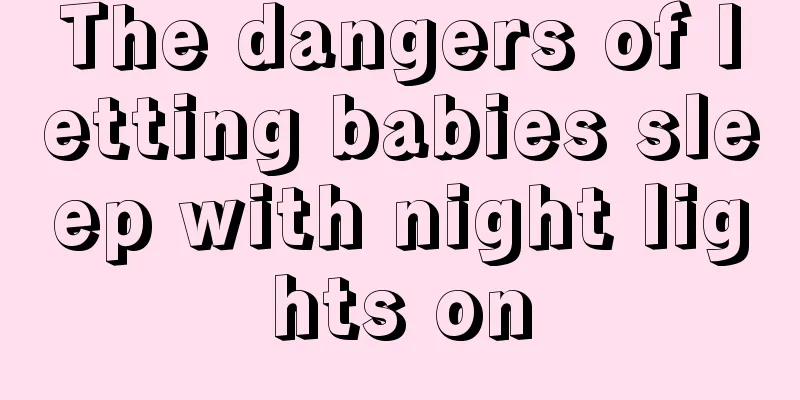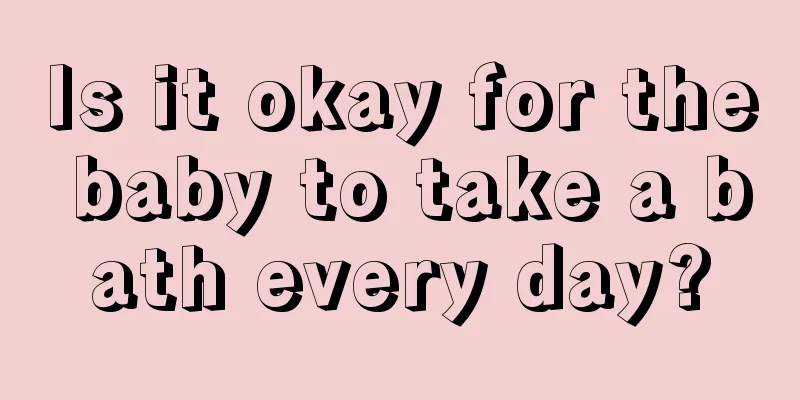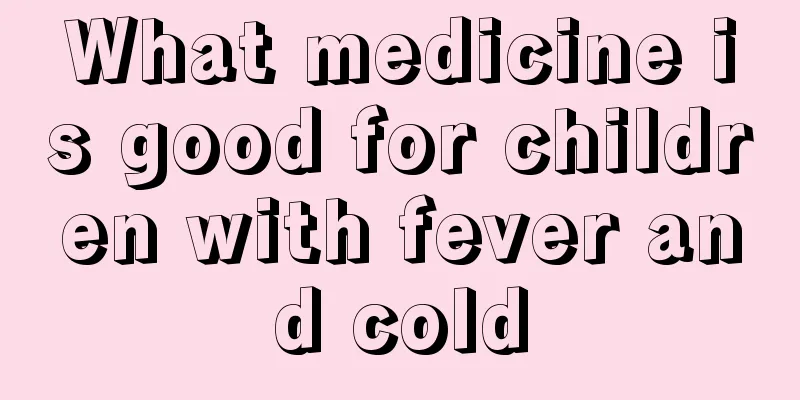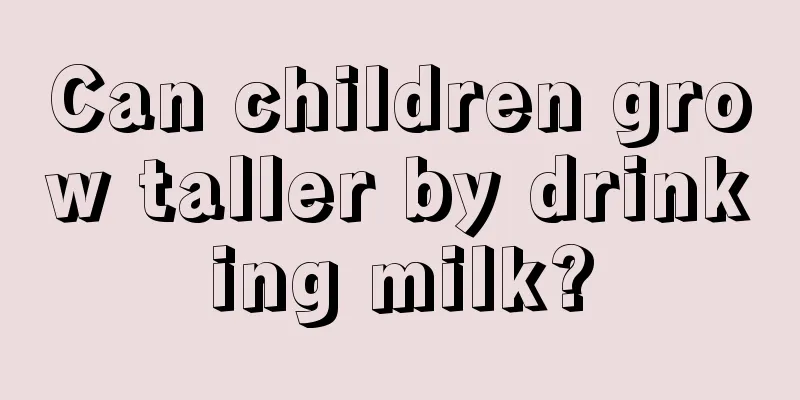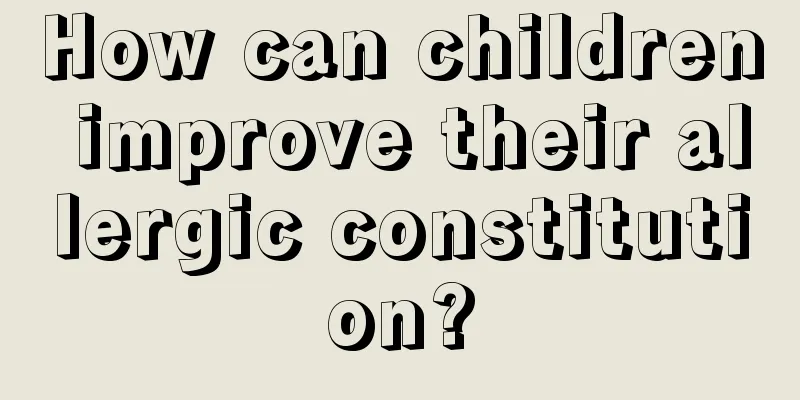What should I do if my child has a cold and fever?
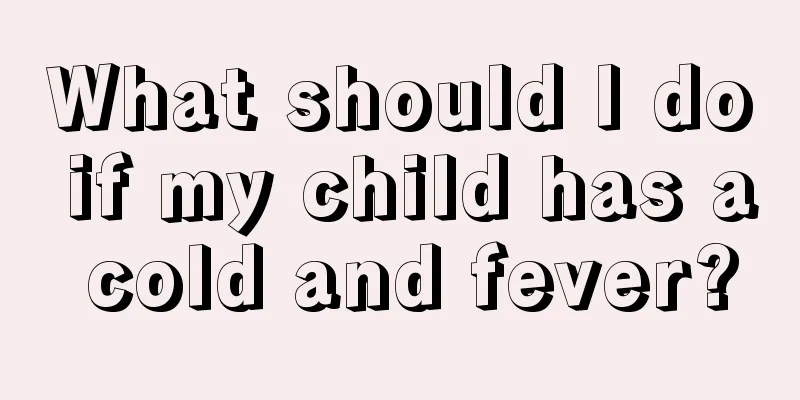
|
Colds are a very common disease in children. They occur all year round and are particularly serious in autumn and winter. When a child is sick, parents will be at a loss and don’t know what to do. What I want to tell parents here is that when a child catches a cold, don’t panic. Try to recall what caused the child to catch a cold. Next, I will list a few measures for parents, let’s take a look. 1. Don’t rush to use antipyretics A child's fever of 37.5℃~38℃ is considered low fever, 38℃~39℃ is moderate fever, above 39℃ is high fever, and over 41℃ is hyperpyrexia. Fever is a response of the body to the invasion of viruses or bacteria. It helps to eliminate the invading viruses and bacteria, thus promoting the normal growth of children. Generally, do not rush to reduce the fever if the body temperature does not exceed 38℃, especially before a clear diagnosis. Blindly reducing the fever may mask the condition and interfere with the diagnosis. When the body temperature reaches above 39℃, you should reduce the fever under the guidance of a doctor. 4% to 12% of children will experience convulsions when they have a high fever. Repeated convulsions may cause brain damage and may also lead to other dangers. Therefore, for children with a history or family history of high fever convulsions, if physical cooling at 38°C is ineffective, the child can be given appropriate antipyretic drugs. If the fever is below 38.5℃, it is best to use physical cooling There are many physical cooling methods. For example, if there is air conditioning at home in summer, maintaining the room temperature at around 25℃ will slowly lower the child's body temperature. Turning off the air conditioner for fear that the child will be exposed to the wind is a wrong approach for a child with a fever. However, if the child's limbs are cold and the child is shivering violently, it means that he needs warmth and you should cover the child with an extra blanket. Even in autumn and winter, infants and young children with fever should not be wrapped too tightly. If the baby's limbs and hands and feet are warm and the whole body is sweating, it means that he needs to dissipate heat and you can wear fewer clothes or even undress the baby and rub the whole body with warm water (37°C) and a towel. This will dilate the blood vessels in the baby's skin and dissipate the heat. In addition, drink plenty of water to help sweating and prevent collapse. Water has the function of regulating body temperature, which can lower the body temperature and replenish the water lost in the baby's body. 2. It is best to choose Chinese medicine to reduce fever If your child has a fever of 38.5℃ or above, please ask a doctor immediately to confirm whether it is a viral infection or a bacterial infection. For viral infections, antiviral drugs such as ribavirin can be used. If accompanied by bacterial infection, antibiotics such as cephalosporins can be used. The World Health Organization recommends that any Western antipyretic medicines should not be used for infants under two months old. Drugs to reduce fever are only used in older children with high fevers. Antipyretic drugs can be Chengong Zaixin (Compound Zinc Cloth Granules) or Xiaokuai Ke (Children's Paracetamol and Phenylamine Granules). The dosage should be strictly followed according to the drug instructions or doctor's orders. 3. Family care is important When a child catches a cold, parents should measure the child's temperature, pulse, and respiration regularly. Measuring body temperature under the armpit is clean, hygienic, convenient and safe, and different treatments can be given according to different body temperatures. The pulse of a patient with a fever will speed up. Generally speaking, the pulse increases by 10 times for every 1°C increase in body temperature. The fastest rate is in newborns, with infants breathing 100 to 120 times per minute, and children aged 1 to 3 years old breathing about 100 times per minute. A disproportion between pulse and body temperature often indicates certain diseases. If pneumonia in infants and young children is complicated by empyema or otitis media, the pulse rate may reach 140 to 160 beats per minute. The normal respiratory rate for adults is 16 to 20 times per minute, while for children it is relatively faster. Keep the air fresh indoors, pay attention to ventilation, and prevent smoke and dust. When ventilating, be careful not to let the wind blow directly on the children. 4. Proper diet promotes recovery Patients with fever should drink more water to increase urine excretion and sweat gland secretion and replenish the water consumed by high fever. When children have a fever, their gastrointestinal digestive ability will be reduced, so you should prepare some delicious, nutritious and easily digestible food for your child. For example, milk, egg custard, fresh fruits, vegetables, porridge, noodles, wontons, etc. To stimulate the appetite, you can also make some refreshing side dishes for your children. Pediatric nutrition experts recommend that children with fever should follow the following dietary adjustments (1) Replenish water Water is better than medicine. When you have a fever and sweat a lot, it is necessary to drink warm water frequently to replenish your body. For infants under six months old, continue to breastfeed. Breast milk is easy to digest, can meet nutritional needs, and replenish water. For artificial feeding, you can feed diluted whole milk, that is, 2 parts of milk powder plus 1 part of water (2:1). Although the baby's milk intake is reduced at this time, the water is supplemented, which is more conducive to the baby's digestion and absorption. It is advisable for young children to drink boiled water when they have a fever. They can be fed some boiled water appropriately to supplement the body's vitamin C and enhance disease resistance. Drink enough water to keep your lips moisturized, but don't drink too much. (2) Liquid diet For young children with fever, the diet should mainly consist of liquid food, such as milk, lotus root powder, milk (with less oil), etc. You can also drink some mung bean soup or ice watermelon to help cool down, promote diuresis and fight disease. However, for infants (under 6 months old) with diarrhea, who have poor resistance, weak gastric motility, and poor tolerance of gastric mucosa, cold drinks are not conducive to physical recovery and should be avoided. When the child's body temperature drops and his appetite improves, he can be fed semi-liquid food, such as minced meat porridge, noodles, rice porridge, egg drop porridge, and some easily digestible foods. The diet should be light and easily digestible, with less oil and salt, and small meals. Spicy and irritating foods should be avoided. But there is no need to avoid certain foods to prevent malnutrition and decreased resistance. After reading the above measures, I believe parents should have some understanding in their minds, so in the future when your child catches a cold, don’t panic, calm down first, and it is best not to go to the hospital if possible, because using medicine will have bad effects. |
<<: How to relieve a child’s fever of 39 degrees?
>>: How to deal with your baby's temper tantrums
Recommend
What can children eat to improve memory
Many parents are worried about their children'...
Can babies drink watermelon juice when they have a fever?
We all know that baby's fever is mainly cause...
What are the symptoms of urinary tract infection in little boys?
Urinary tract infections often occur in adults be...
What should I do if my baby has a fever during the confinement period?
Mothers will go through a difficult period of con...
What to do if children have hand, foot and mouth disease
Everyone knows that hand, foot and mouth disease ...
What should I do if my child has a low-grade fever and cough? How can I treat it?
Low fever is a very common disease in life, and b...
What to do if premature babies have abdominal distension
The digestive system of premature babies is not f...
How to treat indigestion in children?
Faced with a common disease like indigestion in c...
Causes of fever in babies with upper respiratory tract infection
In Yunnan, children's immunity is relatively ...
What are the methods of weaning children?
Everyone knows that newborn babies usually grow u...
How to solve the problem of a five-year-old baby grinding his teeth at night
The problem of five-year-old babies grinding thei...
Baby hip development standards
Hip joint development begins in infancy. We have ...
The child speaks slowly
We will eventually encounter many situations in r...
What to do if your one and a half year old baby has hernia
Children are most likely to get hernia when they ...
Symptoms of a frightened 8-year-old
For eight-year-old children, they already know a ...
